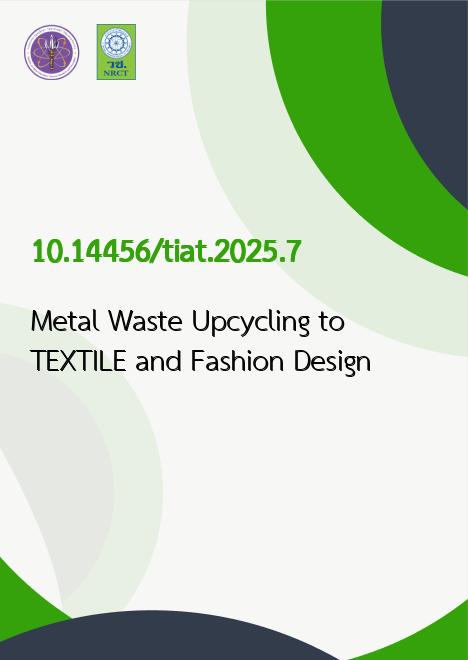
|
Metal Waste Upcycling to TEXTILE and Fashion Design |
|---|---|
| รหัสดีโอไอ | |
| Creator | Takorn Tavornchotivong |
| Title | Metal Waste Upcycling to TEXTILE and Fashion Design |
| Contributor | Onuma Wichaikul |
| Publisher | Kalasin University |
| Publication Year | 2568 |
| Journal Title | Asian Journal of Traditional and Innovative Arts and Textiles |
| Journal Vol. | 4 |
| Journal No. | 1 |
| Page no. | 78-97 |
| Keyword | Upcycling, Circular economy, Sustainable, Metal scraps, Textile and fashion design |
| URL Website | https://so06.tci-thaijo.org/ |
| Website title | Asian Journal of Traditional and Innovative Arts and Textiles |
| ISSN | 2821-921X |
| Abstract | The purpose of this research is to study the form of metal wastes from production processes and metal waste management in industrial plants. The goal is to find ways to recycle and add value to metal leftovers, recognizing the importance of using resources for the highest benefit, which is linked to sustainable design. In addition, metal is also a natural material with a variety of qualities. It holds value and potential for contributing to the possibilities of beauty and functionality that express creativity in textiles and fashion apparels, since the use of metal materials for textiles and apparels dates back to the Byzantine era, where valuable metals like silver or copper were rolled into flat strands and woven together with other fibers. The use of textiles and clothing made from metal indicates the social status and class of the owner. It is considered multiplying the value of metal materials into the human context through textiles and apparels. The processes of value-adding for metal wastes under this study begin by visiting industrial plants to observe the forms of metal wastes. This is followed by material quality analysis and experiments on materials to discover new management and design methods for different forms of metal wastes. Applying natural materials as merging materials with metal wastes to discover a new composite is a finding from the study of current behavioral and trends. The researcher hopes that the composite from metal waste upcycling to produce textile and fashion design will contribute to the creative economy to step into a circular economy and reflect the development of sustainable design in line with global society. |